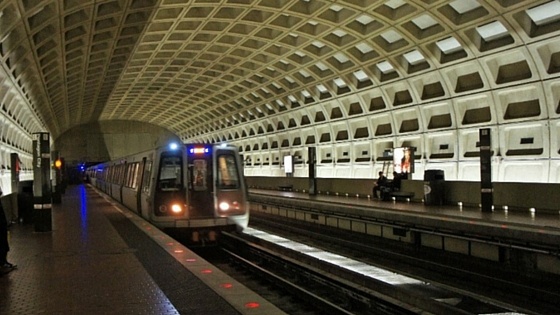The Washington, DC Metro system typically carries 700,000 weekday passengers, making it the second busiest rail system in the nation. As a result of a recent station fire, Metro announced a complete shutdown of the system during the weekday commute on Wednesday, March 16, 2016, to undergo an emergency inspection of underground cables. The prediction of a doomsday commuting scenario was widely reported in the media in advance of the Metro shutdown. Would that prediction be realized?
Washington, DC: No Stranger to Crippling Commutes
Washington, DC is not a stranger to doomsday commuting scenarios. One of the most historic commutes occurred in 1982 when Air Florida Flight 90 crashed into the 14th Street Bridge during a snowstorm, shutting down a major departure route to Virginia during the evening commute. Less than an hour later, a Metro train derailment shut down two lines of the Metro. Finding it impossible to get home, many commuters were forced to abandon their cars, get hotels in the city, or sleep in their cars or offices. Since that time, many weather-related events, public transportation malfunctions, an earthquake, and special events taking place in Washington, DC have resulted in snarled traffic in the region.
How Did the Recent Metro Shutdown Impact Traffic?
Somewhat surprisingly, traffic congestion during the recent Metro shutdown was reported to be about the same as a typical Wednesday commute in most areas, both during the morning and evening rush. Some commuters even reported less traffic than normal, although some bus lines were reported to be more crowded than normal. Why? The answer is simple: The unprecedented planned shutdown of the Metro system caused the federal government and many businesses to offer employees the option to work from home and a significant percentage of workers (nearly 40%) took their employers up on the offer, allowing offices to remain productive even in the face of a transportation crisis in the Washington, DC region. WTOP News conducted a survey to determine how commuters changed their plans in response to the Metro shutdown. The results are as follows:

Home Offices
Washington area employees who routinely work from home offices probably didn’t blink an eye over the recent Metro shutdown. Nor do they have to be concerned about commuting during dangerous weather situations to which this area has become very familiar. These employees have all of the equipment and connectivity that allows them to be fully operational in a home office setting. Metro shutdown? No need for a meltdown!
Working from Home: Stay Productive Even in Times of Crisis
What we have learned from the recent Metro shutdown is that employees who typically work in a traditional office setting can be given the flexibility to telework and maintain the daily operations of their business or government office. Given the high costs associated with closing offices or with losing productive work time from employees due to unwieldy commutes, it is prudent that both the public and private sectors are experimenting with reliance upon telecommuting during times of crisis. Given the myriad of potential threats to reliable transportation options in the Washington, DC region and beyond, it would be wise for government and private businesses to further develop policies and invest in technologies that allow for the seamless continuance of operations during times of crisis, including electronic file sharing and electronic communications.
Looking Ahead
The recent Metro closure and subsequent decision by government officials and many private businesses to provide workers with the option to telecommute helped to avert a regional commuting nightmare. This situation can be held up as a model for how the use of telecommuting can allow government and businesses to “keep their doors open” even when they don’t, well, keep their doors open.




.jpg)

.png)
.png)
/Employee%20Autonomy%20Part%202%20(Blog%20Title).png)
.jpg)


.jpg)
.jpg)
-1.jpg)
.jpg)
.jpg)
.jpg)
.jpg)
.jpg)

